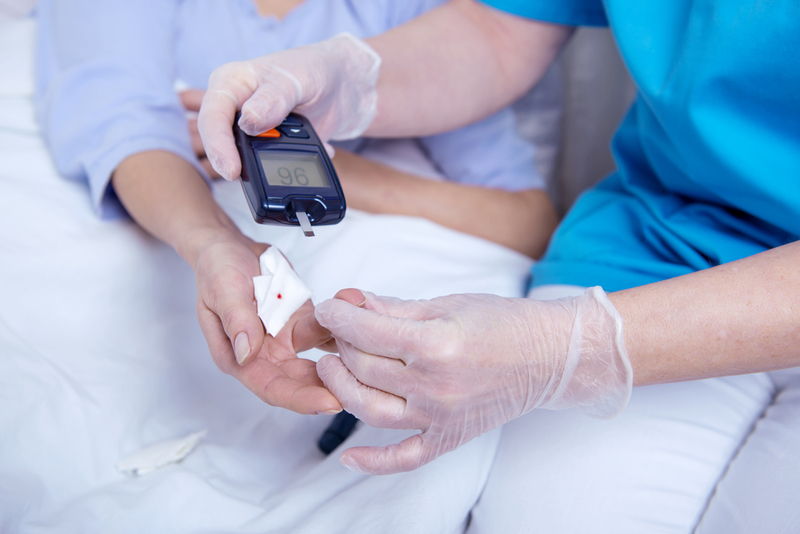First GWAS analysis of 'type 1.5 diabetes' reveals links between immune and metabolic disease
Newswise Oct 20, 2018

Scientists who performed the largest-ever genetic study of a puzzling type of adult-onset diabetes have uncovered new connections to the two major types of diabetes, offering intriguing insights into more accurate diagnosis and better treatment.
Informally termed “type 1.5 diabetes,” latent automimmune diabetes in adults (LADA) is a relatively common disorder that shares features of type 1 diabetes (T1D) and type 2 diabetes (T2D). LADA is commonly misdiagnosed as T2D, as it presents in adulthood but doesn’t initially require insulin treatment. New research, appearing online September 25, 2018 in the journal Diabetes Care, reveals details of the underlying genetic influences in LADA, while leaving open many questions about how to classify the disorder.
“This study lends support to the idea that LADA is a hybrid of type 1 and type 2 diabetes, but doesn’t settle the question of the best way to precisely define the disorder,” said co-first author Diana L. Cousminer, PhD, a geneticist at Children’s Hospital of Philadelphia (CHOP). “Correctly characterizing LADA is important, because it may determine whether a patient receives the most appropriate treatment.”
The new research, the first genome-wide association study (GWAS) of LADA, represents a large international effort, with dozens of coauthors from nine countries. Many of the coauthors, including both co-corresponding authors of Cousminer’s, Struan F.A. Grant, PhD, of CHOP and Richard David Leslie, MD, of the University of London, UK, were leaders of a 2017 study of candidate genes in LADA. That previous study implicated gene variants linked to LADA that also played roles in T1D and T2D.
While the current study is larger than the 2017 analysis, and had genome-wide reach, both studies found the strongest genetic signals in LADA were associated with T1D, the autoimmune form of diabetes that usually presents in childhood and requires treatment with insulin. The current analysis also found genetic signals linked to T2D, the metabolic type of diabetes, more typically appearing first in adults, and by far the most common type of diabetes.
The new study performed GWAS analyses in cohorts of European ancestry. The primary analysis compared 2,634 LADA cases to 5,947 control subjects. Secondary analyses consisted of the LADA cases vs 968 T1D cases and the LADA cases vs 10,396 T2D cases.
Overall, the team found that the strongest genetic signals in LADA were mainly shared with established variants known to be linked to T1D. However, the researchers discovered a novel locus with genome-wide significance near the gene PFKFB3. This gene codes for a protein that regulates both insulin signaling and glycolysis, the chemical reaction that yields energy from glucose. “This finding points to how variants at PFKFB3 may help to drive LADA,” said Cousminer, who added that because the gene’s product not only impacts metabolism (a key feature of T2D), but also regulates inflammation in autoimmune disease (a key feature of T1D), “this protein, therefore, appears to sit at the intersection of both major types of diabetes.”
“Further study of underlying genetic interactions in LADA may reveal better biomarkers of the disease,” said Rajashree Mishra, a co-first author of the current study, from CHOP’s Division of Human Genetics and a graduate student in the Perelman School of Medicine at the University of Pennsylvania. “Currently, as high as 5% to 10% of patients diagnosed as adults with type 2 diabetes may actually be misdiagnosed, and in fact have a late-onset form of autoimmune diabetes,” she said. “More accurate diagnosis may guide better clinical management. For instance, patients with LADA may require close monitoring to detect the optimal point at which they require insulin.”
Better knowledge of the underlying genetics and biology of LADA could potentially lead to new treatments, said Cousminer. “The interaction of genes in LADA may modify the disease process by delaying the onset of more severe autoimmune diabetes into adulthood. If further research uncovers those mechanisms, we may be able to develop therapeutic methods to delay more severe disease.”
—Newswise
-
Exclusive Write-ups & Webinars by KOLs
-
Daily Quiz by specialty
-
Paid Market Research Surveys
-
Case discussions, News & Journals' summaries
